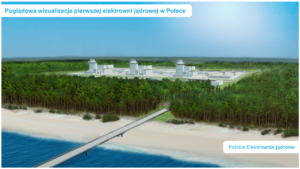On Sunday, January 27th 2019, PGNiG Polish Oil and Gas Company will receive another load of liquefied natural gas. It will be the 50th delivery to the President Lech Kaczyński LNG Terminal in Świnoujście. Thus the total LNG volume purchased so far by PGNiG will amount to approximately 5.7 bcm after regasification.
The carrier Iberica Knutsen transports approx. 57 thousand tons of LNG from Sabine Pass terminal in the USA. It equals about 75 mcm of natural gas following regasification – which is the amount the entire Poland consumes in four summer days or one winter day. The cargo was purchased as part of a spot transaction from Naturgy (formerly Gas Natural Fenosa).
“Spot transactions is the task of our office in London. Our traders search for favorable market opportunities, thus completing our LNG portfolio. Liquefied natural gas is significantly rising in the PGNiG import structure. In 2018, its share has already exceeded 20 percent, and our ambitions for 2019 aim even higher,” said Maciej Woźniak, Vice-President of PGNiG Management Board for Trade. At the end of 2018, PGNiG signed four long-term contracts for the purchase of LNG from the USA. Deliveries from one of the American partners – Cheniere Energy – will commence this year.

Including Naturgy spot delivery PGNiG will have imported over 4.2 million tonnes of LNG to Poland, which after regasification represents approximately 5.7 bcm, including two so-called technical loads that were necessary for commissioning of the terminal. From June 2016, when the terminal became operational, 37 cargoes arrived from Qatar as part of a long-term contract with Qatargas, 9 spot deliveries – from Norway, the USA and Qatar, and one delivery under a medium-term contract with Centrica. LNG tankers arrive at the terminal in Świnoujście twice a month on average with June and December 2018 and January 2019 being the busiest months with three LNG deliveries each. With the upcoming delivery January 2019 will also be a month with three cargoes received.
Thanks to cargoes purchased by PGNiG terminal in Świnoujście – part of the OGP Gaz-System group – has the highest annual utilization rate among all 22 onshore LNG regasification terminals in Europe which stands at about 60 percent. It is followed by Zeebrugge terminal in Belgium which uses about 40 percent of its capacity. An average for the most of European terminals is 30 percent.
Most of liquefied natural gas that undergoes regasification goes to the Polish pipeline network, from where it reaches households, industry, heat and power plants, it is used as a fuel for city buses, and is also exported to the Ukrainian market. Some of the LNG is reloaded to tank trucks that transport LNG to the farthest parts of Poland, wherever there is no access to the traditional gas network. Then, with the help of regasification stations – operating similarly to LNG terminal, but on a smaller scale – the gas is transferred to recipients. Tank trucks have delivered LNG from Świnoujście as far as Bulgaria and Estonia.
PGNiG








